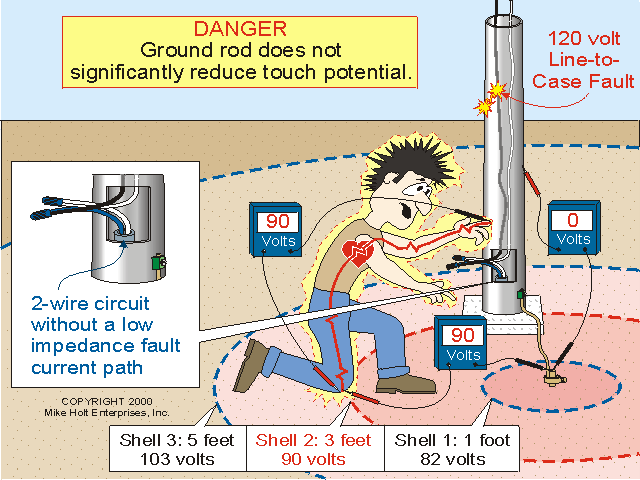- Location
- Wisconsin
- Occupation
- PE (Retired) - Power Systems
ronaldrc said:If you want to use an analogy
Do this, take a pickup truck set you a 5 kw 120 volt portable generator in the back of it take a extension cord cut the female plug off and splice a temporary light socket pig tail with a 100 watt light bulb in the socket.
Now drive a ground rod in the ground at the back of the truck, Oh say a few feet from the truck.
Now plug the cord in the GFI receptacle that most the new generators have, start the generator the bulb should be lite.
Now take the wire nut off the black wire of the pigtail, but please don't take it apart and get between it.
With the wire nut off and the bulb lite touch the black wire to the ground rod, Please make sure you are not touching the pickup or generator when you do this.
If the GFI trips you all are right if it doesn't Larry and myself are right, I will take your word for it.
For the GFCI to trip there must be a complete circuit back to the frame of the generator. My point is that if the ground rod is not part of the fault current path then it is not needed in order for a GFCI to operate.
Do you intend the ground rod be bonded to the generator in any manner?
What happens, if there is no ground rod at all, and you touch the generator frame instead?
I do not own a generator or a pickup truck.
Have you tried this experiment?



